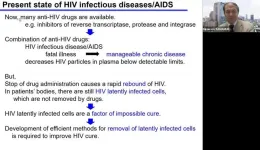(Press-News.org) New global research on child mortality rates in Ethiopia shows while there has been a significant decline in these rates in past three decades, too many children under the age of five are still dying.
The analysis found the mortality rate in the under-five demographic decreased by almost 4.5 per cent every year between 1990 and 2019.
However, despite the progress, it’s still one of the highest rates in the world with an estimated 190,000 under 5 deaths in 2019 at the rate of 52 deaths per 1000 livebirths. The country’s neonatal mortality rate is 26.6 deaths per 1000 livebirths.
Lead author Dr Gizachew Tessema from the Curtin School of Population Health said in 2019, almost three quarters (74 per cent) of these deaths occurred before a child’s first birthday and over half (52 per cent) in the first 28 days.
“While a baby born in Ethiopia today is three times less likely to die before age five than one born in 1990, this reduction is not enough,” Dr Tessema said.
“We are still losing unacceptably too many young lives from preventable causes, such as neonatal disorders, diarrhoeal diseases and respiratory infections.”
Dr Tessema called for a concerted effort to improve the standard of care across Ethiopia, particularly in regions with predominantly rural and pastoralist communities, where both services and reporting mechanisms are sub-standard.
“We need a global investment and more domestic financing in strengthening essential obstetric, neonatal care and other child-focused services to ensure the hard-won gains in fighting child mortality and supporting Ethiopia’s most vulnerable families are not lost.”
The United Nation’s Sustainable Development Goals set targets to reduce the death rate for under-five-year-olds to 25 per 1000 livebirths and reduce neonatal death rate to 12 per 1000 by 2030. With Ethiopia’s mortality rates two and three times those figures, the country is unlikely to reach those targets.
Given the study uses data prior to the COVID-19 pandemic and the recent civil war in the country, Dr Tessema warned the current figures could be higher, suggesting the need for urgent study.
“Ethiopia is yet establishing vital registration system and has a historical lack of reporting due to cultural and other reasons, particularly in its predominantly pastoralist communities regions,” Dr Tessema said.
“This study highlights the urgent need to improve the accuracy of regional estimates, so accurate data can be used to guide both support and policy decisions.”
Curtin University, the Institute for Health Metrics and Evaluation (IHME) at the University of Washington’s School of Medicine, the Ethiopian Public Health Institute, and Ethiopia Child Mortality Collaborators worked together as part of the Global Burden of Disease (GBD) 2019 Study. They examined data across nine administrative regions and two chartered cities in Ethiopia.
Published in PLOS Global Public Health the research is titled ‘National and subnational burden of under-5, infant, and neonatal mortality in Ethiopia, 1990–2019’ and is available online here: https://doi.org/10.1371/journal.pgph.0001471
END
Urgent action needed to further improve child survival in Ethiopia: Study
2023-06-21
ELSE PRESS RELEASES FROM THIS DATE:
Quantum interference can protect and enhance photoexcitation
2023-06-21
When a photon interacts with a material, an interaction occurs that causes its atoms to change their quantum state (a description of the physical properties of nature at the atomic level). The resulting state is called, aptly, photoexcitation. These photoexcitations are conventionally assumed to kill one another when they come near each other, radically limiting their density and mobility. This in turn limits how efficient tools that rely on photoexcitation such as solar cells and light-emitting devices can be.
But in a study published June 19 in the journal Nature Chemistry, scientists at Northwestern University and Purdue University challenge this assumption ...
Reducing bias and stigma associated with medication-assisted treatment improves care
2023-06-21
Medication-assisted treatment (MAT), such as naltrexone, is a well-documented successful treatment for opioid use disorder (OUD). However, there are multiple barriers for clinicians to use MAT, including clinician lack of confidence in using the treatment, their own misconceptions about the patient population, and, until recently, federally required training. Additionally, there is a stigma associated with MAT and the patients who would most benefit from it. Improving access to MAT training and integrating it into clinician programs and curriculums may remove identified barriers, decrease stigma, and enable newly trained clinicians to treat patients.
To address these barriers, ...
UNM researchers find medical cannabis patients who feel 'high' report greater symptom relief but increased negative side effects
2023-06-21
In a new study titled, “Understanding Feeling ‘High’ and Its Role in Medical Cannabis Patient Outcomes,” published in the journal, Frontiers in Pharmacology, researchers at The University of New Mexico, in collaboration with Releaf App™ found that patients who reported feeling “High” experienced 7.7% greater symptom relief and an increase in reporting of positive side effects such as “Relaxed” and “Peaceful.” However, these benefits must be weighed against a more than 20% increase in negative side effect reporting.
Senior author and Associate Professor of Psychology, ...
Screening newborns for "bubble-baby" disease saves lives
2023-06-21
Screening newborns for severe combined immunodeficiency disease (SCID) significantly increases the survival of children after bone marrow transplantation, a new North American study finds.
Published today in The Lancet with an accompanying editorial, the retrospective study was co-led by Elie Haddad, an Université de Montréal medical professor and clinician scientist, pediatrician and immunologist at the UdeM-affiliated CHU Sainte-Justine mother-and-child hospital.
The research shows that the gradual adoption of newborn screening for SCID since 2008 in North America has boosted the survival rate from 73 per cent between 1982 and 2009 to ...
Rain gardens could save salmon from toxic tire chemicals
2023-06-21
Specially designed gardens could reduce the amount of a toxic chemical associated with tires entering our waterways by more than 90 per cent, new research shows.
Tired toxins
The chemical 6PPD-quinone can form when car tires interact with the atmosphere. It enters rivers and streams when rain runs off roads into waterways. It is toxic to coho salmon, rainbow trout and some other fish.
“Rain gardens”, or bioretention cells, are gardens engineered to reduce flooding and soak up contaminants when road runoff is directed ...
New MU study examines variability of water, carbon in Missouri agriculture ecosystems and future impact on crops
2023-06-21
One of the main reasons plants use water is to allow them to absorb carbon dioxide from the atmosphere. This means that, in plants, the water and carbon cycles are tightly linked. In a new study, researchers from the University of Missouri and the United States Department of Agriculture (USDA) used this foundational principle to identify sustainable farming practices aimed at helping staple crops like corn and soybeans thrive during extreme weather conditions that have become more common in the Midwest.
This study examined how farming practices affect crop resilience to climate change by examining water and carbon ...
Welcoming two new journals to the PLOS portfolio: PLOS Mental Health and PLOS Complex Systems
2023-06-21
SAN FRANCISCO — PLOS today is announcing that it will soon launch two new journals: PLOS Mental Health and PLOS Complex Systems. PLOS sees these new journals as an opportunity to give evolving research communities opportunities to forge a new path for research in the field. Whether that means welcoming new ways of sharing research transparently or cementing new policies that enable research to be evaluated and rewarded more fairly, or simply finding a broader audience where research can make a greater real-world impact.
PLOS Mental Health provides a dedicated venue for all mental health research, connecting global experts from a broad range of disciplines and addressing challenges ...
A new, promising weapon in the fight against HIV
2023-06-21
A research team led by Tokyo Medical and Dental University (TMDU) has identified a molecular compound that activates latent HIV-1 in cells, showing promise for HIV treatments
Tokyo, Japan – A multi-institutional research group led by researchers from Tokyo Medical and Dental University (TMDU) has made a significant and promising step forward in our ability to treat human immunodeficiency virus type 1 (HIV-1), the virus underlying acquired immunodeficiency syndrome (AIDS).
To appreciate their accomplishment, we must first know a little about why HIV-1 is difficult to eliminate. ...
A roadmap for gene regulation in plants
2023-06-21
– By Will Ferguson
For the first time, researchers at the Department of Energy’s Lawrence Berkeley National Laboratory (Berkeley Lab) have developed a genome-scale way to map the regulatory role of transcription factors, proteins that play a key role in gene expression and determining a plant’s physiological traits. Their work reveals unprecedented insights into gene regulatory networks and identifies a new library of DNA parts that can be used to optimize genetic engineering efforts in plants.
“Transcription factors regulate things like how plants grow, how much fruit they produce, ...
Cave excavation pushes back the clock on early human migration to Laos
2023-06-21
CHAMPAIGN, Ill. — Fifteen years of archaeological work in the Tam Pa Ling cave in northeastern Laos has yielded a reliable chronology of early human occupation of the site, scientists report in the journal Nature Communications. The team’s excavations through the layers of sediments and bones that gradually washed into the cave and were left untouched for tens of thousands of years reveals that humans lived in the area for at least 70,000 years – and likely even longer.
“When we first started excavating the cave, we never expected to find humans in that region,” said University of Illinois Urbana-Champaign anthropology professor Laura Shackelford, who led ...



